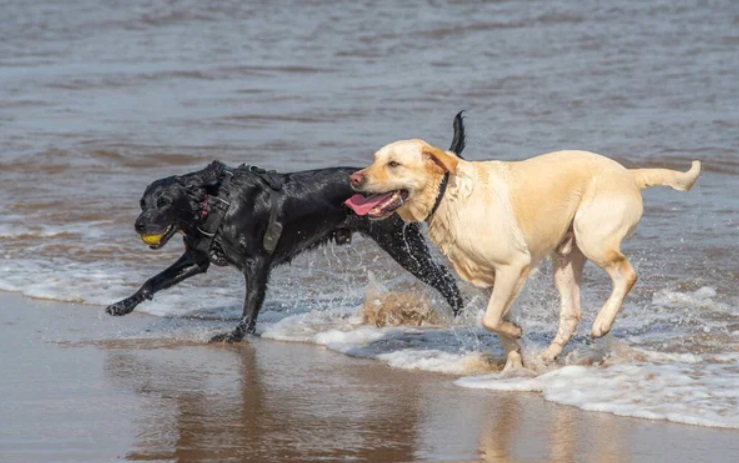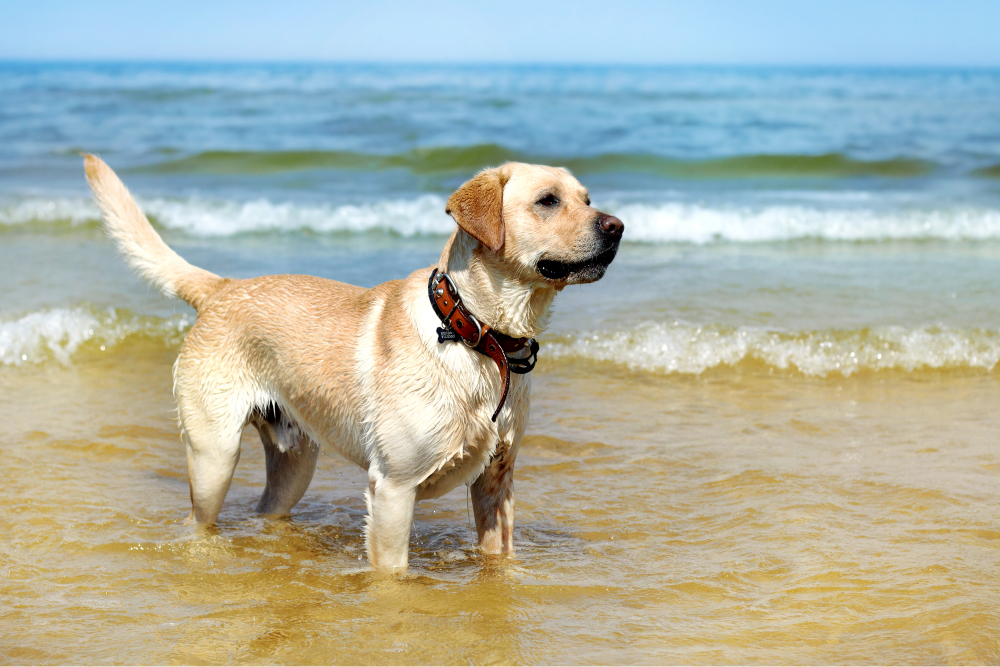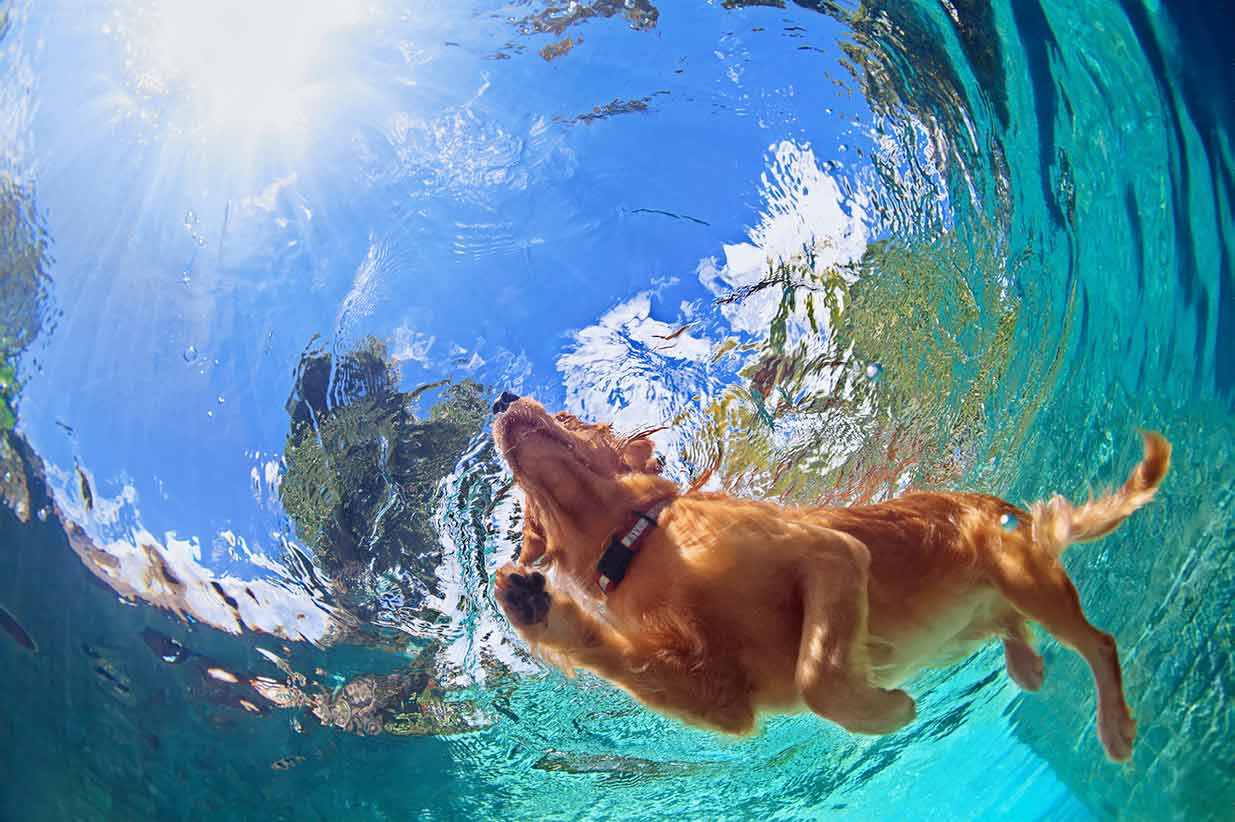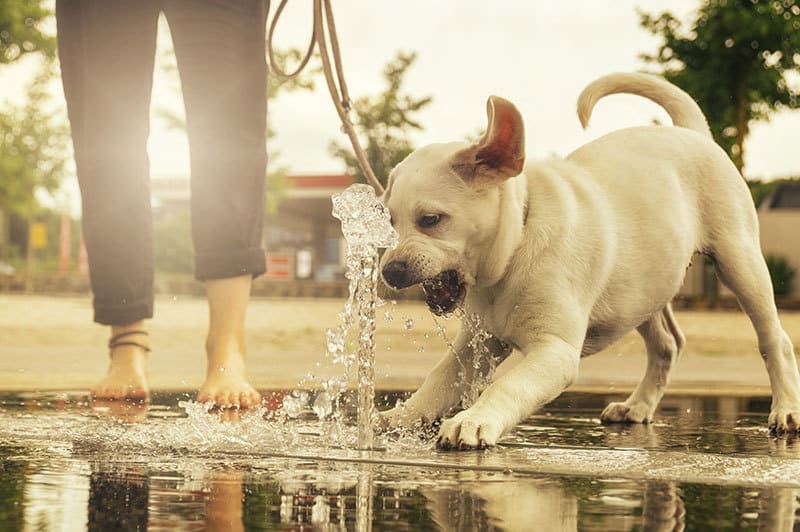If you love water, and you want a dog that will love it as much as you do, it might be time to get a Labrador Retriever. Owning a pet that loves water as much as you do is a privilege. That is not the only reason why Labs are amazing family pets. But if your question do Labradors like water, the simple answer is yes.
For the longer one, read on.
Labrador Origin and History
If you trace back the lineage of the Labrador Retriever dog breed, it is easy to understand why they love water. After all, the Lab is a water dog breed. Going back to the 18th century, they were used by fishermen of the Labrador Sea in northern Canada. They helped fishermen bring back fish and other aquatic animals.
The name retriever derives from there as well. They were quick at looking for fish that may have fallen out of the nets and bring it back to the shore in no time.
And that is how Labs developed their love for the water. Over the years, their swimming gene continued to develop, to the point they are the most famous water dog nowadays.
You can say these dogs were bred for swimming. Initially, Labradors belonged to the working dog breed. Yet, over the years, this popular dog breed showed other flashes and qualities that made him more than just a working breed.
Nowadays, most Labs are physically able to swim if they find themselves in water. And most of them will go in willingly.
What Makes Them Great Swimmers?
As we said before, this popular dog breed was once bred for swimming. And looking at their body composition, you can easily see how. Here are some physical traits that make Labs great swimmers.
Waterproof Coat
Labs have a double coat, and that often means a lot of shedding. But it also makes their skin waterproof. The outer coat of the Lab, one that makes a mess in your home, is designed to repel water and keep the inner layer dry.
The inner coat, on the other hand, is soft and regulates the dog’s temperature. It helps your puppy stay warm in cold temperatures.
Webbed Paws
Look closely at the paws of your Labrador Retriever, and you will see a thin membrane in between the toes. It is what gives your dog’s feet a webbed look.
The webbed paws have a function, the same as other amphibians. It helps animals spend a lot of time in water. It also helps for an easy swim in lakes or shallow water.
A Thick And Powerful Tail
The next body feature that helps Labradors swim better is their thick and powerful tail. In the same spirit that swimming vessels need a rudder that steers them in the right direction, Labs have their powerful tail.
Thick and strong, it helps the dog find its way rapidly through a stream of water.
When Can Labs Begin Swimming?
Now that we answered the question do Labradors like water, let’s talk about when you can allow your dog to tip its toes in it.
The best way is to introduce your puppy to water surfaces when it is young, like 8 to 10 weeks old. Wait before your puppy has all the necessary vaccinations, and then you can start the water fun.
Introduce them to water gradually. This ensures the dog doesn’t become scared or anxious because of the water. Now, Labs have a natural tendency and instinct to love water. But give them some time. Do not push it. Never throw your Lab directly into the water.
Why My Lab Doesn’t Love Water?
As I said before, most Labs love water. But sometimes, there are Labs that simply do not want to enter any water surface. There are a couple of reasons why that might be the case. Let’s take a look.
Fear Of The Unknown
Sometimes, due to the owner’s fault for not socializing his puppy, dogs have a fear of the unknown.
And while Labs have a natural instinct to get into the water, if they have not been socialized properly as puppies, they might be fearful of unknown surfaces and environments.
It also applies to rescued Labs, who have been moved from one home to another without being exposed to different things.
Bad Experience
Raise your hand if you have had a bad experience with something and you refuse to go through it again. Well, that might have happened to your rescued Labrador as well. You can never know what your dog has gone through in his previous home.
Breed Divergence
Do you know there are two types of Labradors? Those are American Lab and English Lab. The American Lab is mostly a working dog breed, while the English Lab is a show dog breed.
The American Labrador is a natural athlete, slimmer in physique and lighter in weight. The English Lab spends more time being groomed than running and playing outside. They tend to be stockier, heavier, and less athletic.
How To Help Your Lab Love Water?
While most Labs love water, you can help them love it even more. How? By creating a positive association and experience with water.
Introduce Your Puppy To Water
You can start by bringing home a doggie pool. Eventually, as your Lab is growing, move to a pond, or the beach. Or you can try taking a walk where the water is shallow. This way, you and your puppy can dip your toes into the water. Slowly increase the depth of water.
Swim With Your Labrador
Labs have a natural instinct of pleasing their owner. They are loyal, affectionate, and love to be part of the fun. So, use that to your advantage.
Your puppy will start paddling instinctively when they see you in the water. They will love to come to you.
Play Fetch In The Water
Another way you can make your Lab a better swimmer is to play games that come naturally to him. Fetch is a game Labs love because it plays to their retriever instinct. Throw a waterproof toy in shallow water.
When your puppy brings back the toy, reward it with treats and praise, and then throw the toy again.
Let Your Lab Swim With Other Dogs
Dogs can teach puppies better than we can. Bring a new puppy into a trained dog’s home, and they will learn the house rules. Puppies learn by watching familiar dogs.
Now, the only problem with this is you have to have a friend with an experienced dog around.
Final Words
I cannot stress this enough. LET YOUR PET TAKE HIS TIME. Do not push your Lab into water. Most Labs will take to swimming in no time.
But if your Lab is anxious, let it come out of its shell. Do not force something that will happen anyway. Be patient!










